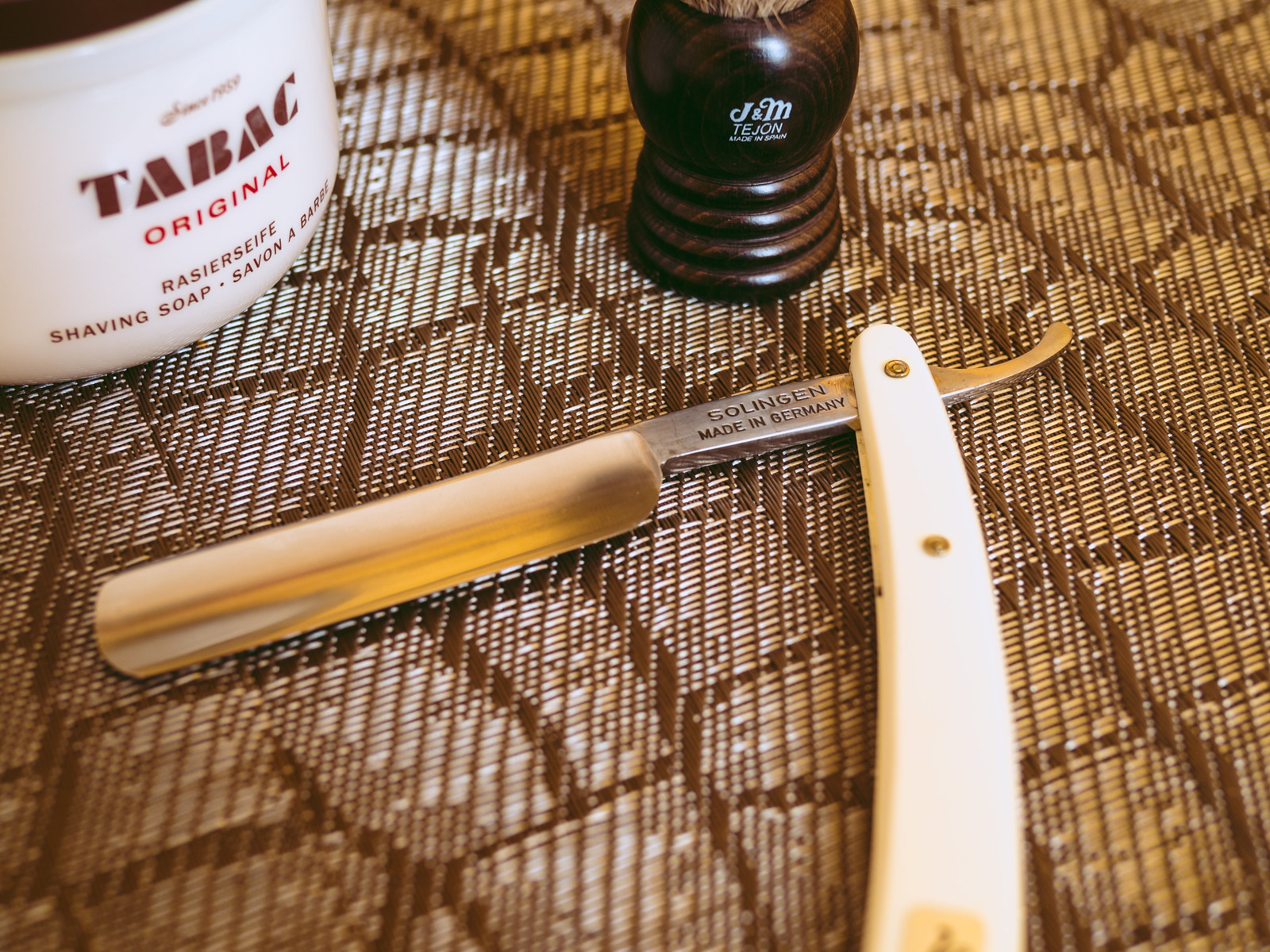José Mujica, the current President of Uruguay, is quite the character. He doesn’t live in the presidential house, for one, and instead spends his days in a modest farm owned by his wife in the outskirts of Montevideo, Uruguay’s capital city. His security detail is the bare minimum Uruguayan law would allow him: two security guards by the front gate and two orange traffic safety cones. And the cones, he jokes, he could do without.

Photo Credit: OEA - OAS
His monthly salary as Uruguay’s President amounts to approximately $12,000, 90% of which he donates to several charities across the nation. This has earned him a solid reputation as “the world’s humblest president”.
Sobriety as a way of life
Mujica’s sober personality stands in stark contrast with the rest of global political leaders, so often surrounded by excess and scandal. If these leaders, Mujica believes, don’t live like their countries' citizens, how can they be expected to solve their problems? How could they ever fix something they fail to understand at the most fundamental of levels?
It’s this sobriety — which he carelessly shrugs off, as if it had never been really a choice — that has become the defining trait in his political career. It has also, of course, earned him a few enemies along the way. But Mujica doesn’t have time to worry about them; his gaze always seems to focus elsewhere, his mind busy, thinking of all the things he wants to do next.
When asked by a Spanish reporter during an interview a few months ago, he had a few very interesting things to say about the consumer society, and sobriety as a way of life. Unfortunately, the original interview is in Spanish, so I have transcribed and translated the most relevant bits below for your benefit:
In today’s society, due to the multiplication of this hyper-consumerism, we are leaving other essential forms of consumption unattended and instead, we’re spending tons of human resources on pretty stupid things that have little to do with human happiness.
People are stuck inside the giant spider web that is the consumer society, which is built upon the idea of accumulating stuff, and they don’t even realize it. But let’s go to the beginning. When you buy something, make no mistake, the money is an instrument that you’re using to pay for it. But what you’re actually paying with is the time of your life that you had to spend in order to earn that money. So whenever you spend on something, what you’re really giving away is time, the time of your life.
When I talk about sobriety as a way of life, I’m talking about the kind of sobriety that gives you more time, as much time as possible, to devote to the things that truly motivate you. Which are not necessarily related to work.
There’s so much truth in these words. This is a man that values time and attention over the material things in life, and that appreciation has informed every decision in his life. It’s not up to me to judge his political career but at 79, his self-awareness and passion for life are surely worthy of admiration.
Time may be the single most valuable resource we have, and yet we carelessly give it away until one day, most of our life is gone and there’s no going back. But, as Mujica exemplifies, there’s another way to go about life, one that doesn’t revolve around owning more stuff or earning more money.
A geek and his toys
As a geek, I sometimes struggle to embrace a lifestyle of minimalism. I like minimalism on its face, both as a philosophy and as an aesthetic style, but the compromises it demands of me are sometimes overwhelming, because I have a natural tendency to love shiny gadgets and an insatiable passion for discovering new things.
It’s taken me a few years to find an acceptable balance between sobriety and minimalism as an ideal, and a practical approach capable of informing my everyday decisions without requiring me to become a monk. This balance, I have found, adds tremendous value to my life and enhances the role of everything and everyone in it, because everything becomes a conscious choice born of intentionality, instead of it being a random accident or a superfluous craving. It feels like being in control of my own life, and if there’s one thing geeks love more than toys is being in control.
My general approach when it comes to purchasing stuff or incorporating new things into my life comes down to a very simple question: does it provide long-lasting value or is it a spur-of-the-moment, impulsive decision?
It seems like a pretty easy question, but if you’re anything like me, you know answering it correctly can be surprisingly tricky.
Another character trait most of us share is our ability to become extremely excited when we desire something. We now call it being passionate as if it’s a good thing, but make no mistake, there’s nothing noble about it. Desire is an incredibly powerful emotion, but it has the unfortunate side-effect of skewing perspective. When I want something — really want it — I will go to great lengths to justify my intention to buy it. Sometimes, this rationalization happens without my even noticing, and that’s when I know I’m in trouble. That’s when I know it’s time to take a couple steps back.
Who hasn’t spent days researching a new gadget or whatever, only to find it extremely lacking and disappointing when the initial excitement wears off? If you were to look back through the whole process, more often than not you’d find out it was you who deliberately tricked yourself into believing you needed it in the first place. All along, it was you who planted the idea in your head, and it was you who let it grow until it became so powerful that the only way to silence it was to give in to it.
What’s even worse, the whole experience usually leaves behind a sense of disappointment that lasts far longer than the initial excitement, and this dissatisfaction only moves you to try and find the next cool thing.
It happens to the best of us. Luckily, there’s a way to handle it — or at the very least, limit its potential for financial and emotional ruin.
The two-week test
Whenever I’m faced with a new purchasing decision, I apply what I call the two-week test. It’s a remarkably simple thing to do, but it requires a fair amount of discipline and self-control, which are precisely the key factors in all of this.
What the test consists of is this: once I’m done with all my research and I’ve isolated the item I want to buy, I just sit on it for two full weeks before buying it. That’s it. It really is that simple.
I have found that two weeks is just about the time it takes for a fleeting passion to dissipate. Surely in that time, a new interest is bound to cross my mind, and that’s exactly how I test the merit of the original idea. If after those two weeks of competing with other interests the original idea still makes sense, then I go ahead and buy it without remorse.
Now, the key thing here is that when I say sit on it for two weeks, what I really mean is, completely forget about it for two weeks. No more research, no more reading about it, nothing. Which, of course, is easier said than done.
I can’t speak for you, but my brain is particularly tricky when I’m zeroing in on a new purchase, especially if we’re talking about a volatile object such as an eBay listing or a hard-to-find item. There’s almost always a key moment during the research phase when I convince myself that I just found the bargain of the century. I mean it, I actually believe that I’ve somehow managed to find a once-in-a-lifetime deal and that if I don’t pull the trigger that very second I’m going to end up regretting it forever.
Obviously, that’s bullshit.
No matter how great a deal it may seem, if you managed to come across it in just a couple days of casual online research, chances are you’ll find it again. Or maybe you’ll find an even better deal. On an intellectual, rational level, I know that. I know the rush I feel is bullshit. But the funny thing is, it never feels like bullshit at the time.
I still struggle to pass the two-week test. Every. Single. Time. I’ve gotten better at it with the years, but it would be a stretch to say I’ve mastered my geeky impulses. Like most of you out there, I still have a pretty long way to go.
Like my father before me
During the same interview with the Spanish reporter above, José Mujica also talked about consumerism itself, and how it’s the wrong way to solve the problems of the global economy. Here’s a translated excerpt (emphasis mine):
You told me in the beginning that consumer spending is good because it reactivates the economy, and I say you’re right, but whose spending? If we cared about healthy spending, necessary spending by people that today don’t have the means to buy anything, we could grow a global market. And, we’d have a lot more jobs for everyone. But we don’t do that. Instead, we just build disposable stuff and call that innovation.
I see that you don’t shave, but let’s say you did. Why do you need to buy new blades every two or three days, when our grandfathers taught us that a single straight razor can last for three generations?
If we tried to fix the problem of all those people who are starving on Africa and America, you’d see what a market there is, brother. There’s market to spare. To build houses, to fight for medicine… Generosity is the best business.
Once again, it’s hard to argue with that. If you’ve been reading along for some time, you know the topic of responsible consumption has been a recurring theme lately on Analog Senses. About six weeks ago, I published an article titled ‘On craftsmanship, consumerism and zombie iPads’ where among other things, I wrote about how shaving technology evolved from long-lasting straight razors into disposable razors and blades, which were cheaper to produce, but much more expensive to own in the long run, and generated a lot more waste. This nicely mirrors Mujica’s position. One sentence, in particular, now stands out to me:
I write with a fountain pen, I wear a nice watch — nice doesn’t have to mean ridiculously expensive, mind you — and I buy quality items whenever I can. I’ve only owned 3 pairs of winter boots in the past 15 years, all of which were the exact same model. I also ride hand-made bicycles that are almost as old as I am, and that my children will hopefully enjoy riding one day as well. I haven’t quite mastered the art of shaving with a straight razor yet, mostly because I haven’t been clean-shaven in over four years, but I like to think that if I started shaving again, I would probably purchase a quality straight razor and never look back. I dream of one day owning a Leica camera — possibly even a film one — and it will probably be the last camera I ever buy.
As luck would have it, my electric shaver — a cheap one made by Philips — which I used to trim my beard about once a week, croaked on me shortly after publishing that article.
Which brings us to my next trick:
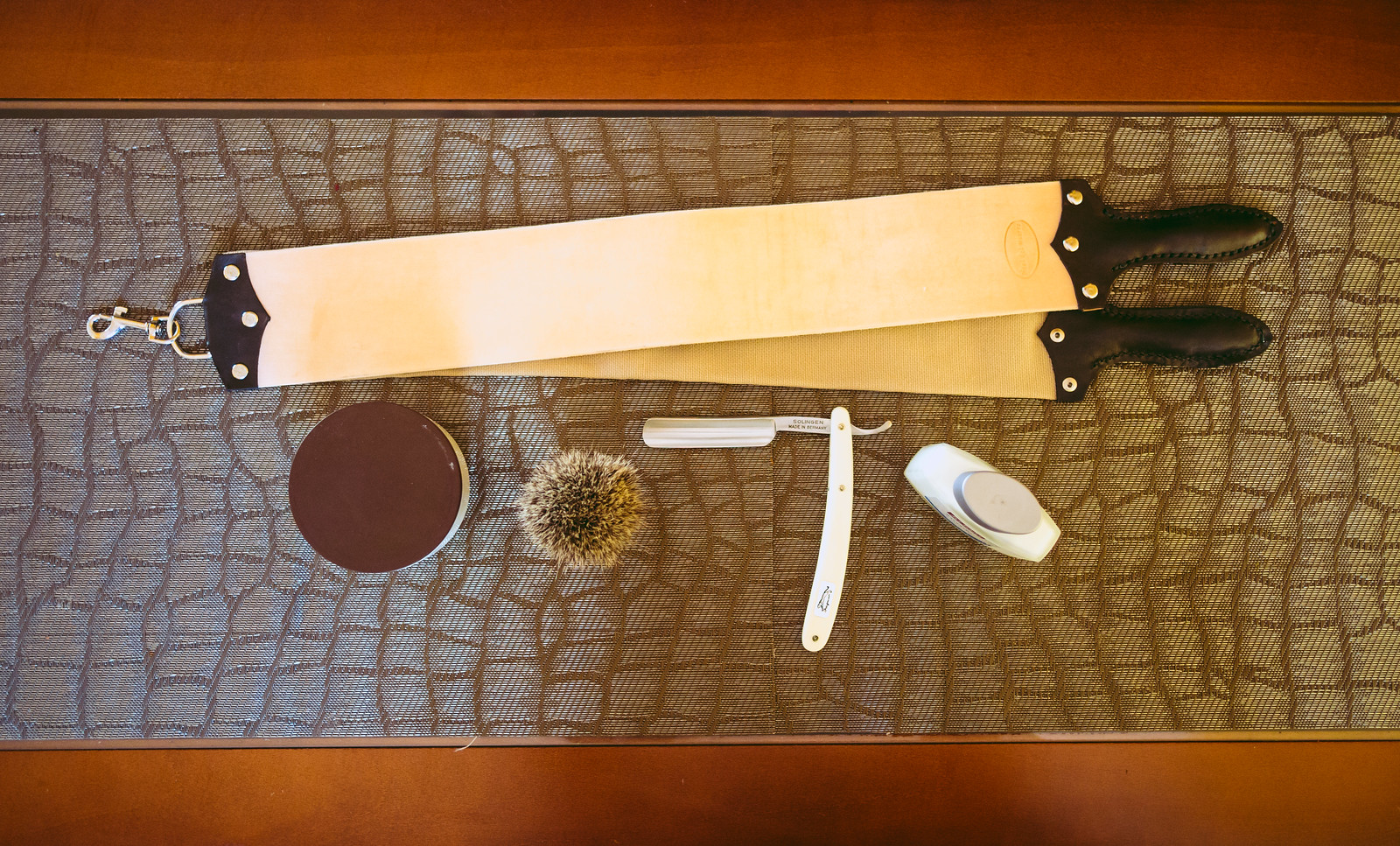
I’ve always found the world of straight razor shaving fascinating, and I actually even bought one many years ago, when I didn’t know any better and I didn’t even own a computer. I never did any serious research and ended up buying a cheap one at a local store. The experience was understandably terrible — there were no YouTube tutorials around at the time — and after that, I kind of moved on and put it behind me. Recently though, it’s been coming back to me as a perfect example of everything I’m talking about here.
That incident years ago was a textbook failure of the two-week test — although technically, I hadn’t even thought the test up yet. Had I taken the time and effort to look at it the right way, I would have either bought a better razor or never bothered with it. Either way, the outcome would have been way better than it was.
This time around, I’m doing things differently. Since my shaver is dead and I need to spend the money anyway, why not take this opportunity to reassess the whole thing? Why not apply the test this time and see what happens?
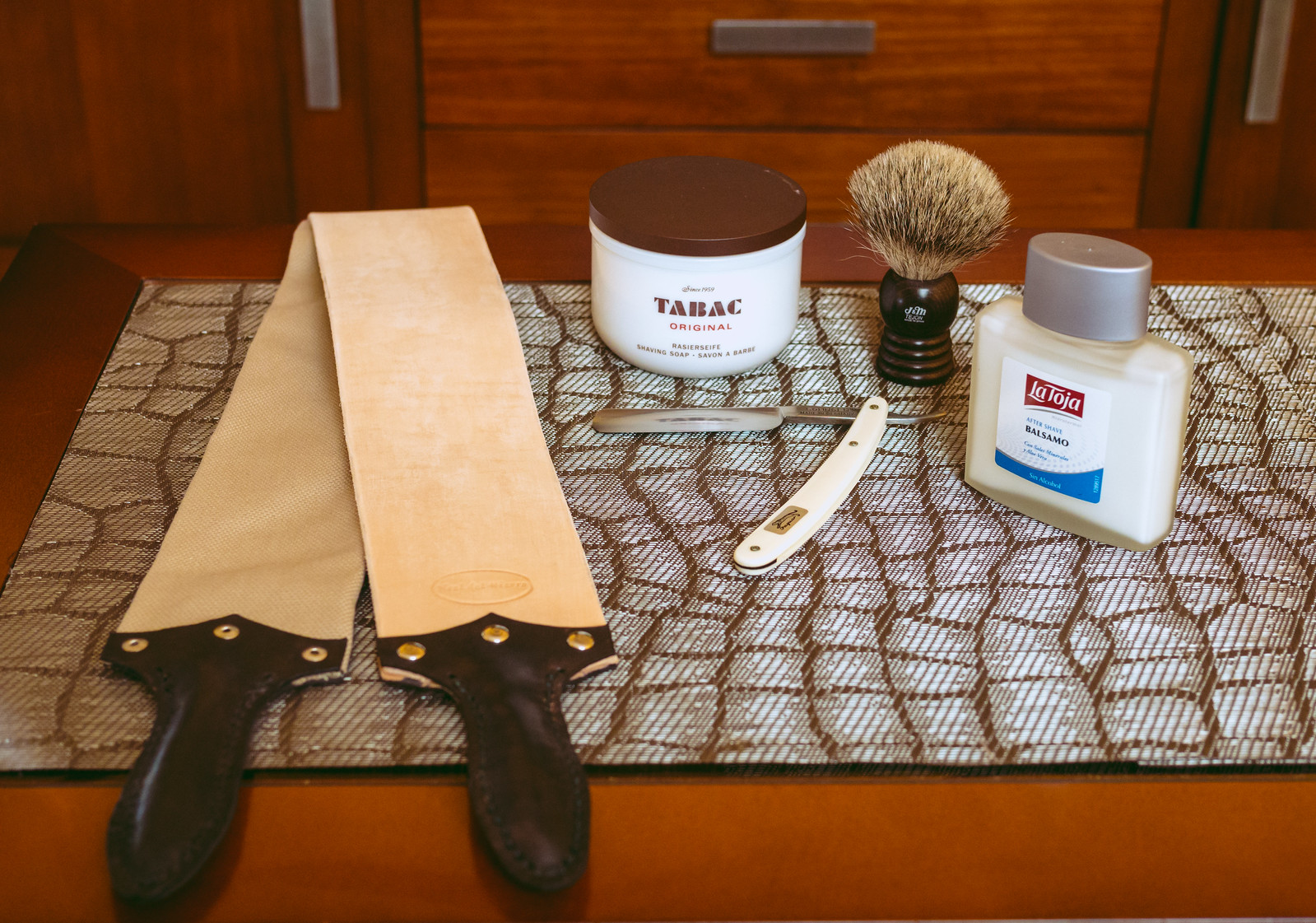
14 days. 336 hours. 20,160 minutes. Maybe this wasn’t such a good idea
It’s been hard. Straight razors are a surprisingly deep rabbit hole, and there are many enthusiasts who swear by them. Filtering out the hype from the actual useful information was not always easy, but this wasn’t my first rodeo. After all, I’ve been blessed with a wide array of uncommon interests.
I took two weeks to do my research, and I soon decided to go for a vintage razor instead of a new one. Vintage razors are typically made of carbon steel, which is more flexible than the modern steel used in current straight razors. It’s also easier to sharpen and requires more care to maintain its edge, so there were a few factors to consider when picking a razor. Not to mention that vintage razors vary wildly in price.
During this phase, I was incredibly close to buying one or two razors I came across. In fact, I almost spent over $200 on a new old-stock (NOS) Filarmónica, an old Spanish manufacturer that’s supposed to be the holy grail of vintage razors. Luckily, I reminded myself of the rules and I decided to just wait it out.
The Filarmónica eventually went unsold, which eased me up a bit and gave me the calmness I needed to put the whole thing out of my mind for the next two weeks. It wasn’t easy, but after the first couple of days I started to relax and when the clock ran out, my mindset had changed dramatically. Instead of going for a high-end razor, I would go for a high-quality vintage razor from a lesser-known manufacturer. These are fairly easy to find on eBay, and can usually be found in pristine condition for under $100.
I finally settled on a new, unused vintage Jaguar, a group brand of renowned German manufacturer J. A. Henckels. I paid about $60 for it. It’s a great razor and to my eye, it also looks lovely:
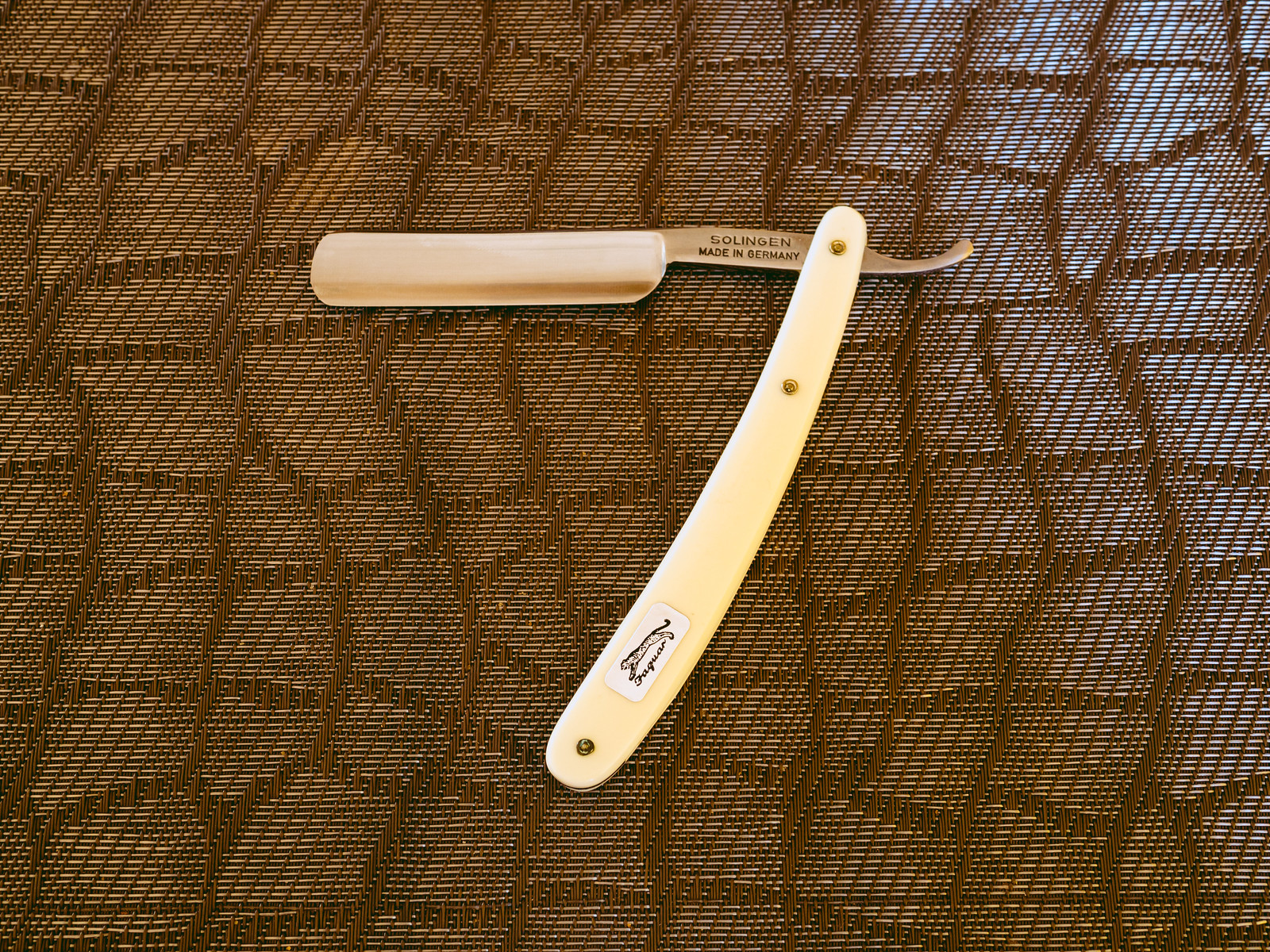
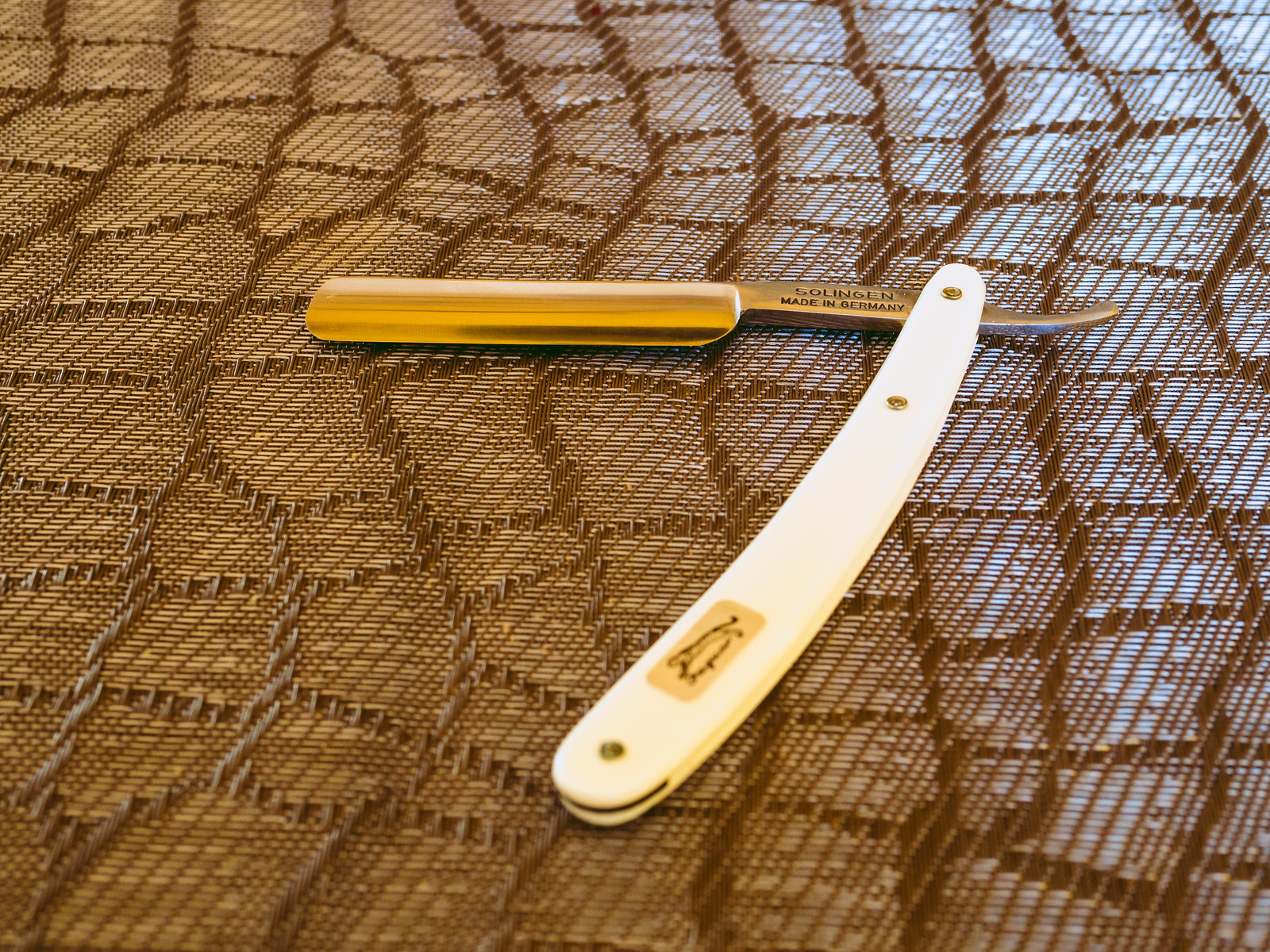
It’s been a few days since I received it and so far I’m incredibly happy with my purchase. There’s quite a bit of a learning curve ahead of me, but I’ve already completed my first whole shave with it — two passes and all — and I’ve somehow managed to not slit my throat in the process, so I’d say I’m off to an pretty good start.
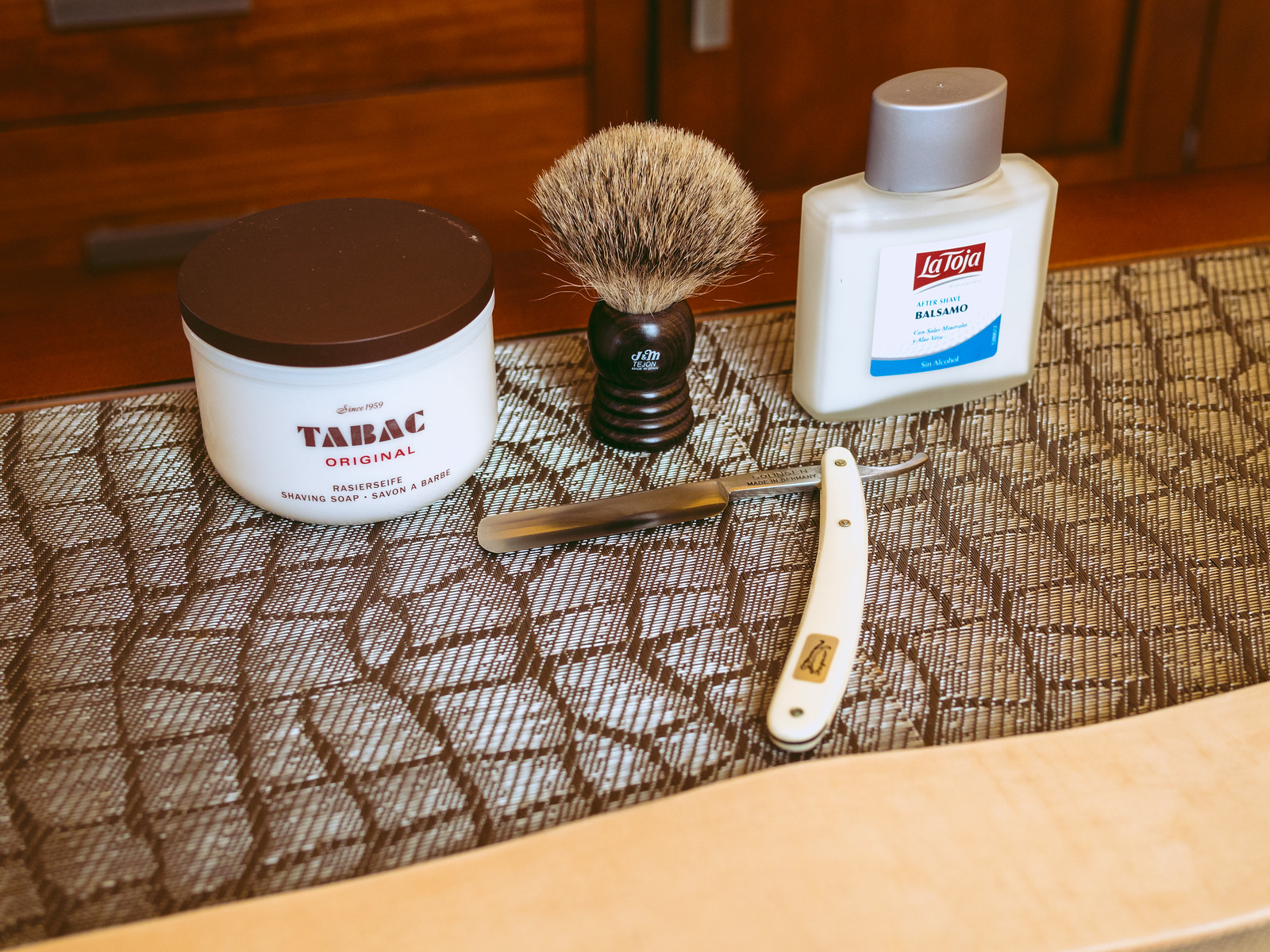
Home is now behind you, the world is ahead
This experiment has reinforced my belief in the two-week test, and strengthened my determination to lead an intentional life and be a responsible consumer whenever possible. Like Mujica, I believe our time is too important to spend on disposable stuff that doesn’t add any value to our lives.
On a personal level, this is deeply satisfying. On a more immediate level, it also means I will never need to buy another razor. With proper care and maintenance, this one will easily outlive me.
However, straight razors are more than simple tools: they have as much craftsmanship in them as they have practical utility, and some of them are genuine works of art. There are many different types and many different sizes, and each one provides a different experience. I still have to find the one that works best for me. As a first foray into this world, though, I couldn’t be happier.
I look forward to exploring this new interest of mine, with the eyes of a curious novice. Suffice it to say, I have plenty of room to grow.
I just have to take it two weeks at a time.
